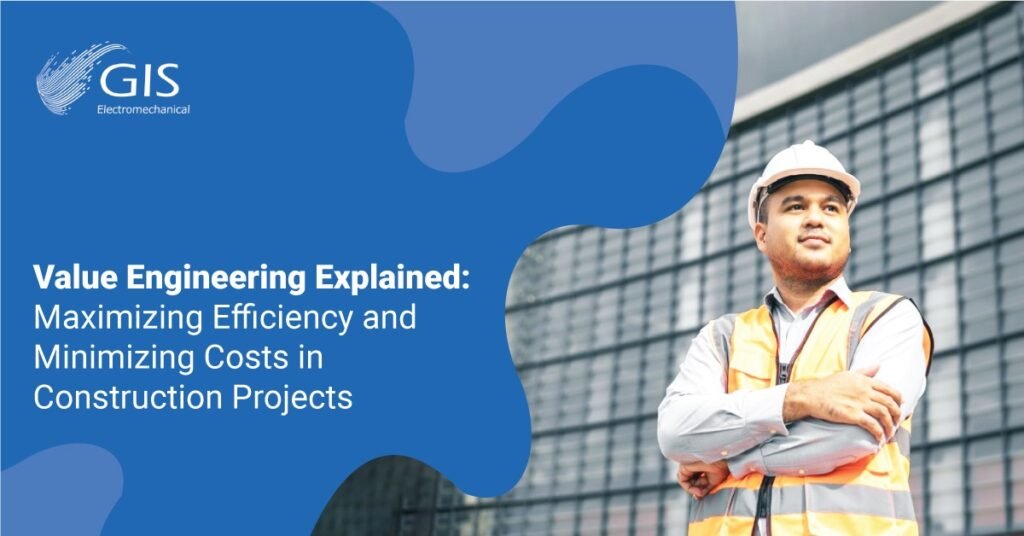Value Engineering Explained: Maximizing Efficiency and Minimizing Costs in Construction Projects

Value engineering is a strategic, systematic approach designed to maximize the efficiency and minimize the costs of construction projects. This methodology involves the thorough analysis of project components, focusing on delivering the best value while retaining the essential functions and qualities of the project. Here, we delve into the details of how value engineering can significantly impact the construction industry by achieving cost savings without compromising quality. The Principles of Value Engineering At the core of value engineering lies the goal of finding the most cost-effective ways to achieve the desired functions of a project. This approach is anchored in three primary principles: Function Orientation: The primary focus of value engineering is on the function of the project. Understanding the key functions helps in identifying where cost reductions can be made without affecting performance. Creative Thinking: A team-based approach encourages collaboration and brainstorming. Multiple perspectives can uncover innovative solutions to reduce costs while enhancing value. Systematic Approach: Following a structured methodology ensures thorough analysis and evaluation, ensuring every aspect of the project is examined for potential improvements. The Value Engineering Process The value engineering process is a systematic approach encompassing several key stages to optimize project efficiency: Information Gathering: This initial stage involves understanding the project goals, objectives, and constraints. Thorough knowledge of the project sets the stage for effective analysis. Function Analysis: Identifying the key functions and objectives of the project helps in prioritizing aspects that must be maintained while considering cost reductions. Creative Phase: A brainstorming session among team members generates ideas for potential improvements. Innovative solutions are identified and recorded. Evaluation: All proposed ideas are carefully evaluated based on feasibility, cost savings, and impact on project quality. The most promising options are shortlisted. Development: The shortlisted options are further developed, considering detailed feasibility, costs, and benefits. Proposals are fine-tuned for implementation. Presentation: The final proposals are presented to the stakeholders for approval and integration into the project. Benefits of Value Engineering Value engineering offers numerous benefits for construction projects, including: Cost Savings: By identifying more cost-effective alternatives, overall project costs can be reduced without sacrificing quality. Improved Efficiency: Streamlining processes and finding innovative solutions can lead to more efficient construction methods. Enhanced Quality: The focus on function ensures that essential project objectives are met while finding ways to improve quality. Better Collaboration: Value engineering involves teamwork and collaboration, leading to a more cohesive approach to project management. Risk Mitigation: Thorough analysis and evaluation help identify potential risks and develop strategies to mitigate them. Challenges and Solutions in Value Engineering While value engineering can significantly benefit construction projects, it is not without challenges. Some of the common obstacles include: Resistance to Change: Project teams may resist changes proposed by value engineering, especially if they are comfortable with existing methods. Time Constraints: Conducting a thorough value engineering process can be time-consuming, which may impact project timelines. Stakeholder Buy-In: Gaining approval from stakeholders for proposed changes can be challenging, especially if they involve significant deviations from the original plan. Solutions to these challenges include: Education and Communication: Informing the project team and stakeholders about the benefits of value engineering can help overcome resistance to change. Integrating VE early: Starting the value engineering process early in the project can help prevent delays and allow for smoother integration of proposed changes. Clear Presentation of Benefits: Presenting clear, quantifiable benefits of proposed changes can help in gaining stakeholder buy-in. Best Practices for Implementing Value Engineering To successfully implement value engineering in construction projects, consider the following best practices: Engage Experienced Professionals: Having a team of skilled professionals with experience in value engineering can lead to more effective analysis and solutions. Involve Stakeholders: Early and ongoing engagement with stakeholders ensures their input is considered and helps in gaining their support for proposed changes. Monitor and Adjust: Continuously monitor the implementation of proposed changes and adjust as necessary to achieve desired outcomes. Document the Process: Keeping detailed records of the value engineering process can provide valuable insights for future projects. Evaluate Results: Assess the outcomes of value engineering implementation to learn lessons and improve future projects. Value engineering is a powerful tool for maximizing efficiency and minimizing costs in construction projects. By focusing on key functions and using creative, systematic methods, project teams can uncover cost-saving opportunities while maintaining or enhancing quality. With the right approach, value engineering can lead to better collaboration, risk mitigation, and overall project success.
